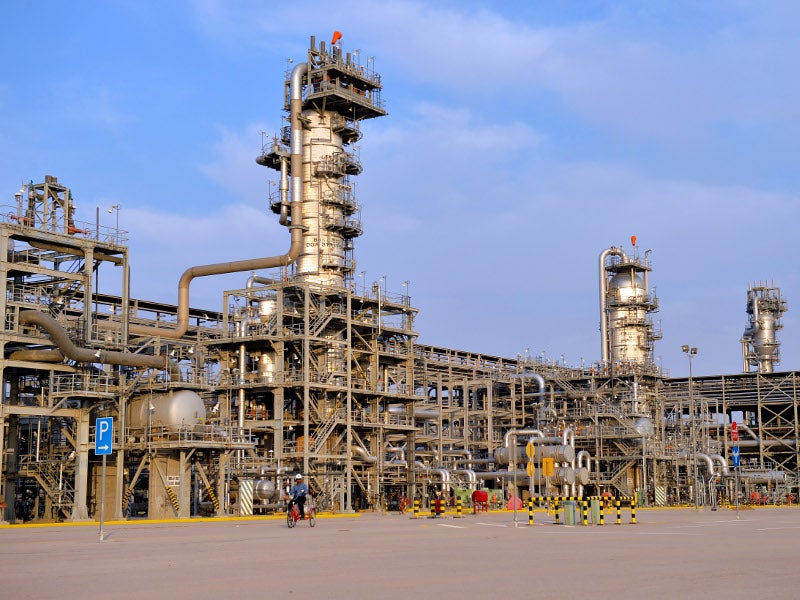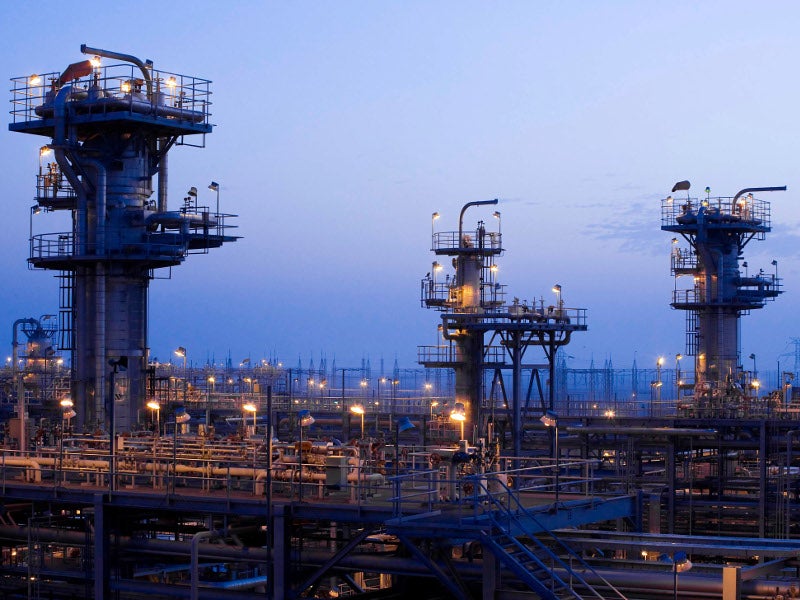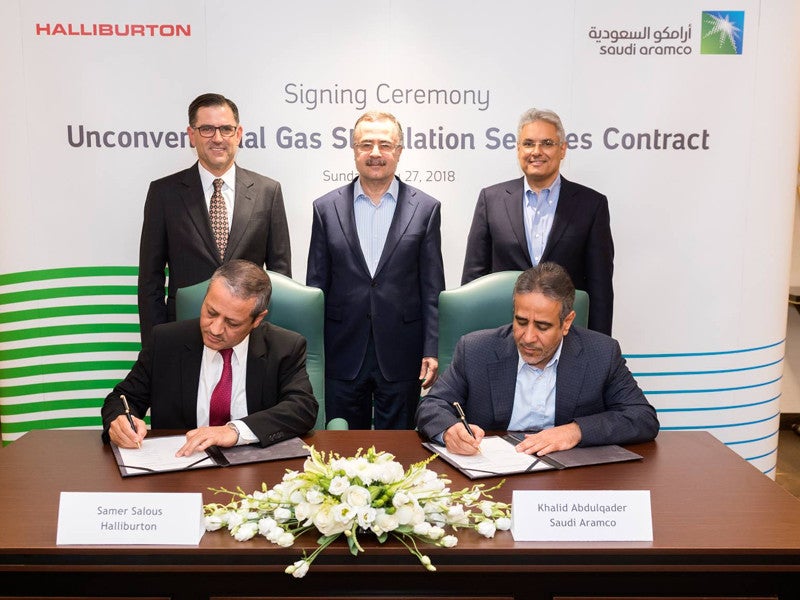Located approximately 100km west of Dhahran and 200km east of Riyadh in Saudi Arabia’s Al Hasa Province, Ghawar is the world’s biggest conventional onshore oil field both by reserves and daily output.
Owned and operated by the state-owned Saudi Aramco, the super-giant oil field has been producing since 1951 and is estimated to continue pumping oil at its current maximum production capacity of 3.8 million barrels a day beyond 2050.
The Ghawar field that produces Arabian light crude oil has contributed more than half of Saudi Arabia’s cumulative crude production since 1938. It currently accounts for approximately one-third of the country’s maximum daily production capacity and more than one fifth of the kingdom’s remaining proven oil reserves.
Ghawar is also the biggest source of associated gas for Saudi Aramco, while some of the major non-associated gas fields of the country are located in the greater Ghawar area as well.
Greater Ghawar area and reservoir details
The Ghawar field comprises six main production areas, namely Fazran, Ain Dar, Shedgum, Uthaminyah, Hawiyah, and Haradh, in the eastern region of the Empty Quarter desert, along the western Gulf coast. The field measures approximately 280km-long and up to 36km-wide.
The main reservoirs of the Ghawar field include the Arab-D reservoir of the Jurassic-age mudstone formations, the Lower Fadhili carbonate reservoir of the Dhruma Formation, and the Khuff A,B,C, and D reservoirs of the Khuff non-associated gas formation.
The Ghawar field was estimated to contain 58.3 billion barrels of oil-equivalent (bboe), including 48.25 billion barrels of liquid reserves as of December 2018. It comprises more than a quarter Saudi Aramco’s estimated total proved hydrocarbon reserves of 256.9bboe, including 226.8 billion barrels of liquid reserves, according to December 2018 estimates.
Further, the southern part of the Greater Ghawar area is believed to host significant volume of unconventional gas and associated liquid resources lying trapped in rocks. Saudi Aramco has started trial production in the area to evaluate the prospects of unconventional production, as part of its unconventional resources programme, which is primarily focused on South Ghawar as well as Jafurah and North Arabia areas.
Ghawar field discovery and development details
The first oil discovery at Ghawar took place in 1948 with the successful drilling of Ain Dar No. 1 discovery well, which was later commissioned as a production well pumping at a rate of 15,600 barrels per day (bpd) in 1951. The well continued to produce dry oil without any water contamination until 1999.
Haradh was the second oil discovery in the Ghawar field. Although the drilling of Haradh No. 1 discovery well was completed in 1949, it was brought into production in 1964.
The Uthmaniyah and Shedgum subfield areas were discovered in 1951 and 1952, but were brought on stream in 1956 and 1954, respectively.
Subsequently, the discovery of the Hawiyah subfield located between Uthmaniyah and Haradh took place in 1953, although production started in 1966.
Eventually, the Arabian D oil at Fazran, the northernmost area of the Ghawar field, was discovered in 1957 and commenced production in 1962.
Infrastructure facilities
The Ghawar field is developed with more than 3,000 producer and injector wells and a network of 25 gas and oil separation plants.
The oil produced from Ghawar is sent to the Abqaiq oil processing and crude stabilisation plant, from where it is further transported to the refineries for final processing.
Most of the non-associated gas produced from the Ghawar field is processed at the Hawiyah natural gas processing plant, which began operations in December 2001. The Hawiyah gas plant is planned for an expansion to add 1.3 billion cubic feet a day (Bcf/d) of gas processing capacity.
The gas produced by the Ghawar field is distributed through the Master Gas System (MGS) pipeline network, which has been in service since 1975.
Oil production and recovery techniques at Ghawar
Although the Ghawar field’s production peaked at 5.7 million barrels a day (Mbopd) in 1981, the field’s maximum daily production capacity is currently stabilised at 3.8Mbopd, which is more than 30% of the country’s total oil production capacity of 12Mbopd.
Saudi Arabia’s two other major fields, the onshore Khurais field and the offshore Safaniyah, have the capacity to produce 1.45Mbod and 1.3Mbod, respectively.
Gas injection at the Ghawar field was introduced in 1958, while water injection was introduced in 1964 to provide additional pressure support. The field utilises water from the Qurayyah seawater treatment plant.
The Haradh III project, which was brought on stream in the southernmost area of the Ghawar field in 2006, was Saudi Aramco’s first project to be developed with maximum-reservoir-contact (MRC) wells with down-hole Interval control valves (ICVs) for flow control.
Saudi Aramco has also implemented a carbon capture and storage (CCS) project, named Uthmaniyah CO2-EOR Demonstration Project, at the Ghawar field for enhanced oil recovery (EOR).
Completed in 2015, the carbon capture and sequestration project allows for capturing and processing up to 45 million cubic feet of CO2, which is transported through an 80km-long pipeline for injection into the reservoir of the Uthmaniyah oil field.
The CO2-EOR project is reported to have doubled oil recovery at four production wells at Uthmaniyah.
Recent contracts for Ghawar field
Halliburton was contracted for unconventional gas stimulation services at South Ghawar as well as North Arabia, and Jafurah in May 2018.
Baker Hughes, a subsidiary of GE, was awarded a £131m ($175m) contract to supply 27 gas compression trains to boost gas production at Haradh and Hawiyah gas fields.





